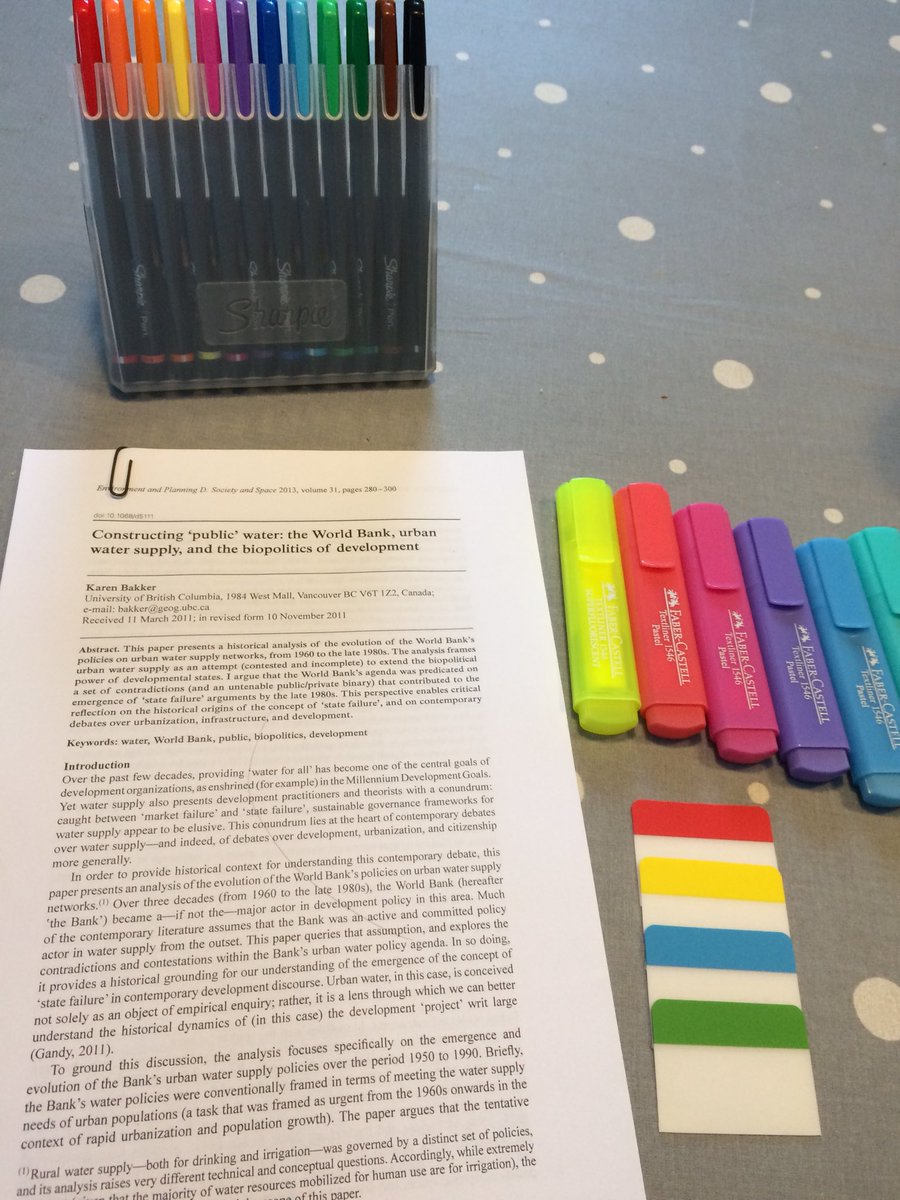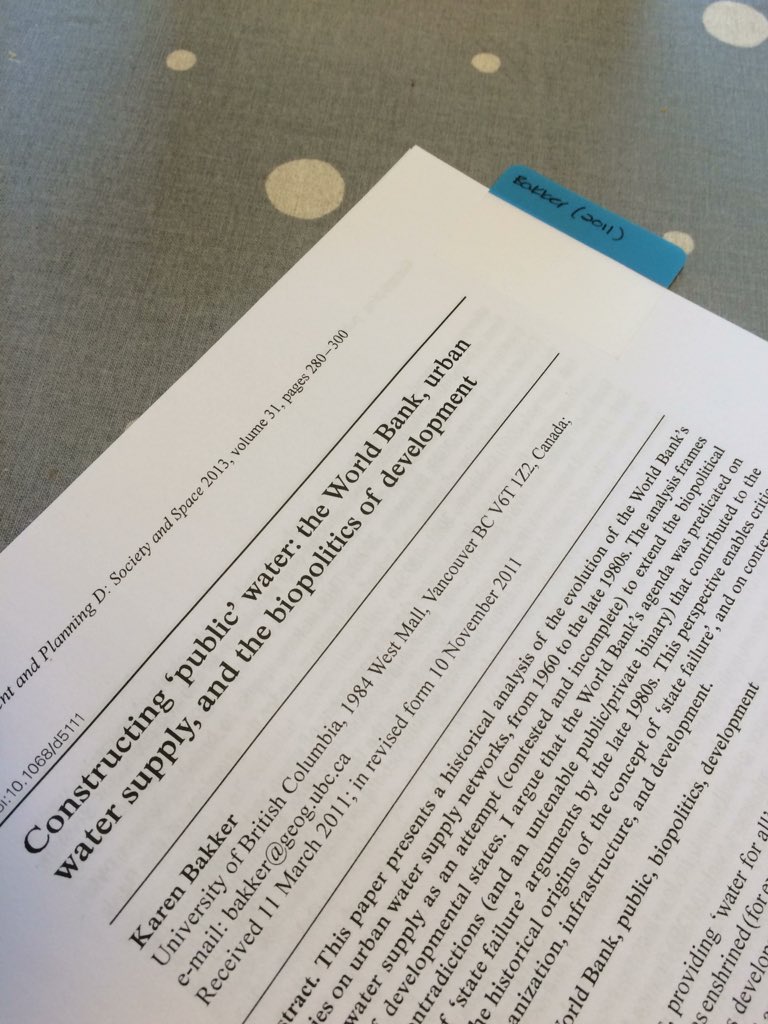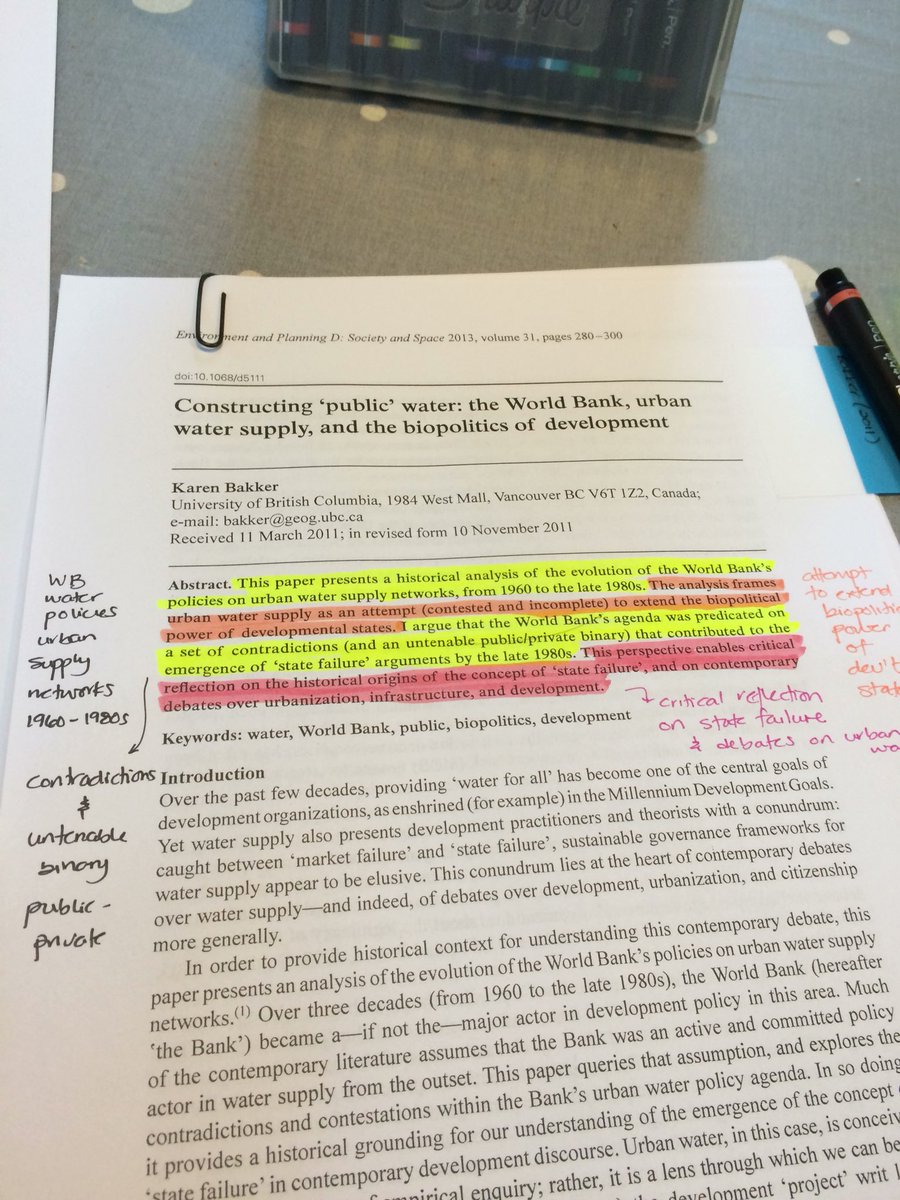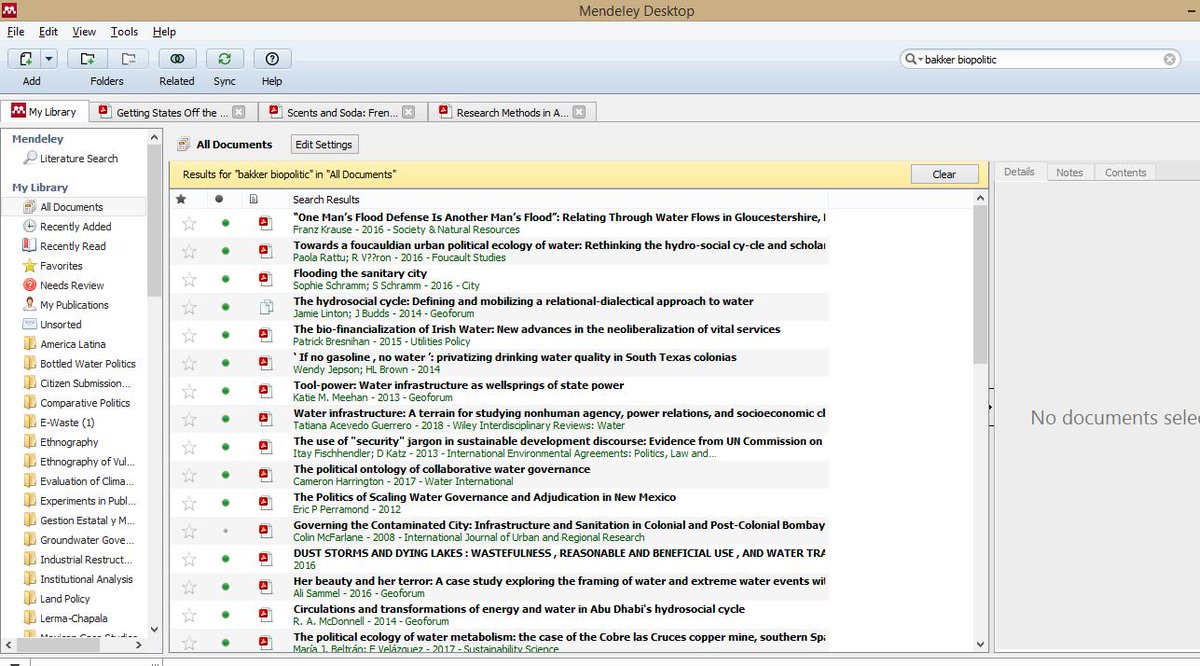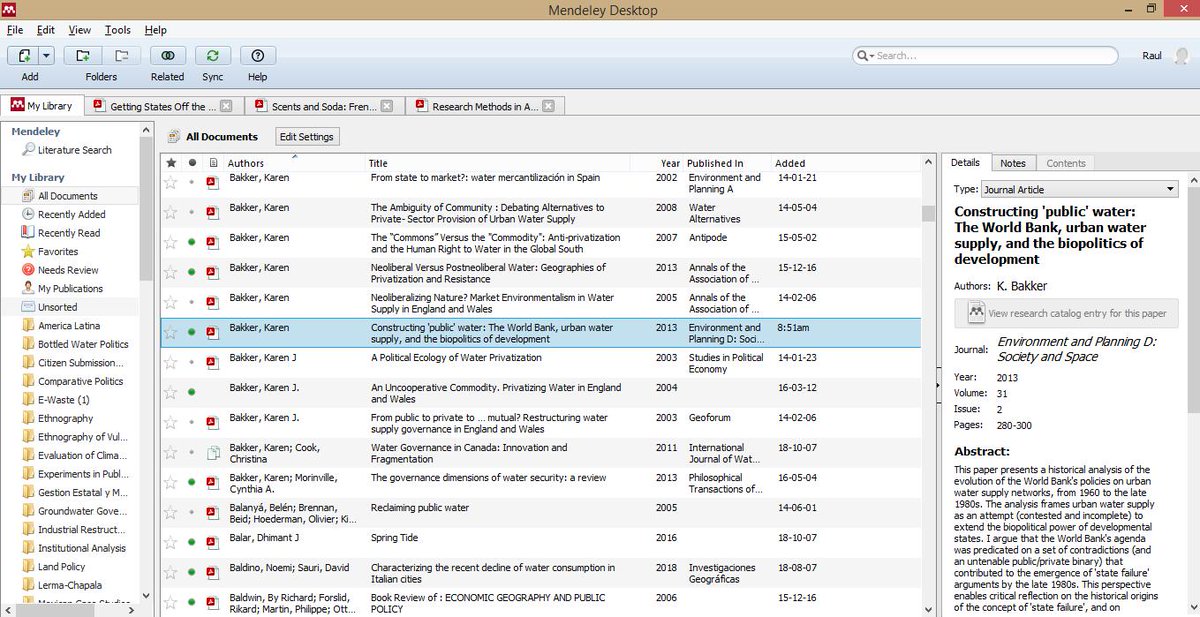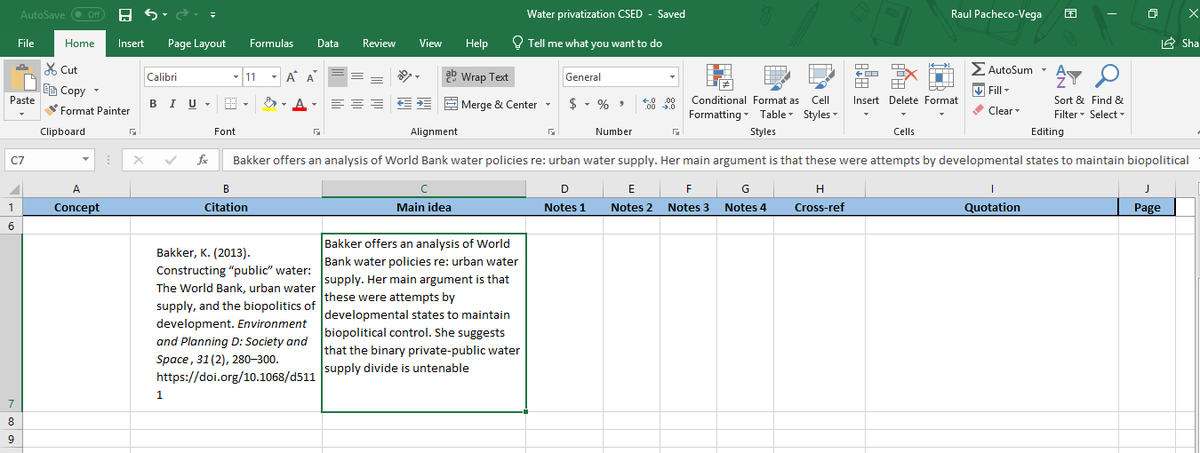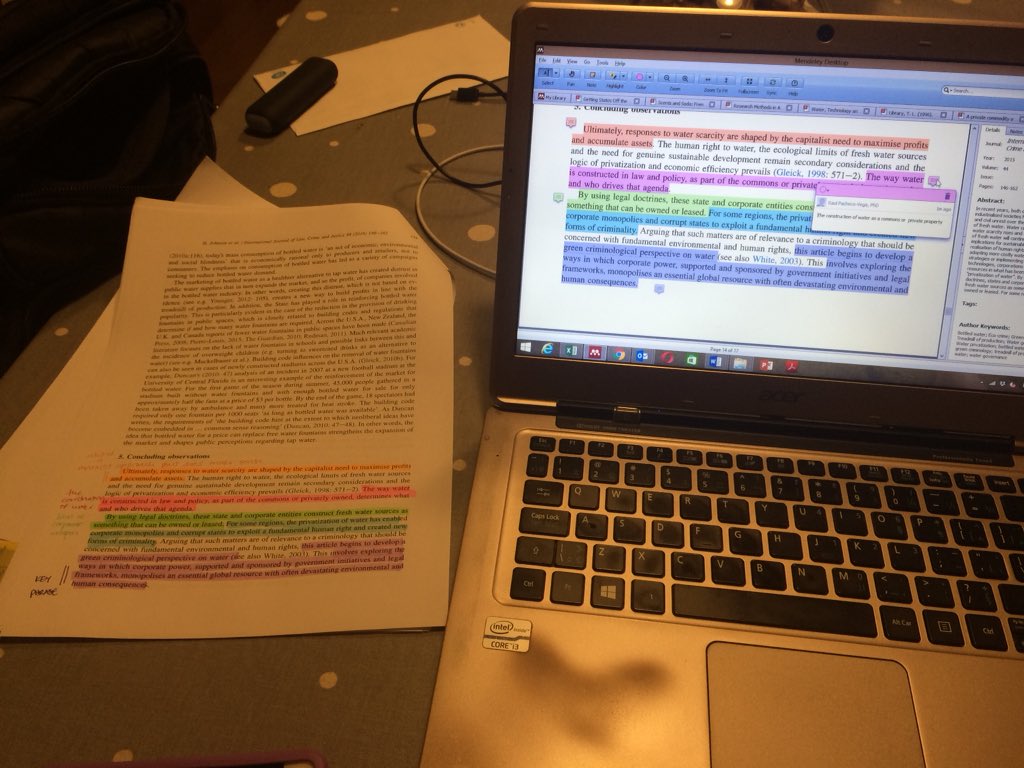I’m going to use this paper to showcase how I highlight, scribble and file my printed materials. I use Sharpie fineliners to write, Stick’n rigid plastic tabs to sort and organize and I’m testing these Faber-Castell highlighters.
First I write the author and year on the plastic tab. I use rigid ones, other people use Post-It notes. For me, the rigidity allows for easier sorting (I file them in magazine holders labeled with the topic or name of the paper I am writing). Colour of label not relevant here.
I usually go through the Abstract, Introduction and Conclusion of a paper (hence AIC) to give myself an idea of the core concepts covered (and empirics if they are included). This is a form of rapid, skimming reading and not a substitute for deeper involvement with the work.
This post describes how I organize my books and printed materials http://www.raulpacheco.org/2015/09/organizing-journal-articles-and-books/ and this one describes the AIC summarization method http://www.raulpacheco.org/2017/01/finding-the-most-relevant-information-in-a-paper-when-reading-a-three-step-method/ I re-emphasize: AIC is NOT a substitute for deeper engagement. You may need to re-read in more depth, again.
Shocking to me, I did not have this paper in my Mendeley library even if I do have the PDF in my Dropbox. I found this out by searching my database for the author and a keyword. I use Mendeley, you can use Zotero, Refworks, Papers, Citavi, whatever. http://www.raulpacheco.org/2018/12/a-brief-guide-to-using-mendeley-as-a-reference-and-citation-manager-and-as-an-aid-to-write-scholarly-papers/
I did a second search (organizing by Author). I thought I had read EVERYTHING that Karen Bakker had published, but apparently not. What I'll do is add this PDF to my "PDFs" folder associated with this particular paper I'm writing, and have Mendeley automagically import it.
This post outlines how I organize the digital copies of my printed files http://www.raulpacheco.org/2015/09/organizing-pdfs-of-journal-articles-book-and-book-chapters/ - in a previous tweet, I linked to a Mendeley guide I wrote. This guide explains how to have Mendeley "Watch A Folder" for automagical importing of PDFs. A clean reference uploaded!
Now, you know I organize my readings through a Conceptual Synthesis Excel Dump. I have a CSED for "Water Privatization". Therefore, this paper will end up there. I use Mendeley's "Copy as Formatted Citation" function to copy the reference on to my CSED.
I use highlighted components of this paper to fill out CSED cells. One reason why I suggest that it is useful to AIC skim a paper and do a CSED row http://www.raulpacheco.org/2017/12/carving-time-to-read-the-aic-and-conceptual-synthesis-excel-dump-combination-method/ is that the more you read, the easier it is to gain a broad overview of the field, and find key papers.
I use a multilevel approach to highlighting - yellow for key idea, orange for second level of importance, pink, green, blue, purple for 3, 4, 5, 6th levels of relevancy. Note how I scribble not only a summary but also my own insights, reflections, opinions, contrasting views.
This is an updated version of my highlighting and scribbling approach. http://www.raulpacheco.org/2018/03/an-updated-description-of-my-colour-coding-scheme-for-highlighting-and-scribbling/ Also, verdict on the Faber-Castell highlighters. Yes to yellow (AMAZING), pastel blue, purple. Pink and orange are dark and dull. Dark blue is too dark to be readable. Incomplete set.
What ends up happening when I am not happy with an entire set of highlighters is that I end up with a mix-and-match melange (mixture in French). I use a combo: pastel purple and pastel blue (Stabilo Boss Original) and yellow, pink, green and orange (Staedtler Triplus Hilight).
I used the Stabilo and Staedtler ones on this paragraph. Note how much nicer these are compared to Faber-Castell. Also note how Bakker repeats core ideas she outlined on the abstract. I found 2 ideas I wanted to probe more in depth (state failure, municipal hydraulic paradigm)
This thread walks you through how I highlight and scribble an entire journal article. In my thread, each tweet shares analytical insights that I then use to write a memorandum. https://twitter.com/raulpacheco/status/867849436332011522
Here I explain how I expand from a Synthetic Note to a Memorandum (using the previous Twitter thread on Dr. Alida Cantor's paper http://www.raulpacheco.org/2017/05/writing-a-memorandum-based-on-a-synthetic-note/) I use those memorandums to create text for my book chapters, books and journal articles. #AcWri #PhDChat #GetYourManuscriptOut
@threaderapp unroll
Somebody asked me how long did an AIC take. For this paper, it took 15 minutes. BUT I could recognize that this article should be read more in depth when I found a link to three R&Rs I’m working on (same paper providing insights for 3 of my projects - this rocks!)
Since this paper will provide me with stuff I need for 3 pieces, I will write a memorandum AND store key details in my Conceptual Synthesis Excel Dump. Somebody asked me if I can do this digitally. Yes, in Mendeley you can highlight and add notes (see here)
And if you want to get all my Twitter threads on highlighting, scribbling, reading, annotating, and synthesizing information, you can read them all in this handy blog post http://www.raulpacheco.org/2019/02/reading-scribbling-highlighting-taking-notes-and-organizing-information-from-a-journal-article-or-book-chapter-walking-through-my-digital-and-analog-processes/ #AcWri #PhDChat #GetYourManuscriptOut

 Read on Twitter
Read on Twitter